| |
| |
Photographer,
Location |
Images |
Comments |
|

|
Peter
Paul Hattinga Verschure,
Deventer, the Netherlands, Europe
Jul. 2, 2008 |
#1,
#2,
#3,
more |
It
was a bright display, with striking rapid changes of forms.
It covered three quarter of the sky. |
|
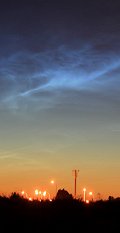
|
Dale
Nosko,
Edmonton, Alberta, Canada,53.33 N, 113.28 W
Jun. 28, 2008 |
#1,
#2, #3,
#4 |
A
beautiful display! The previous morning(June 27-08) was
my first attempt at photographing NLCs. Early Saturday June
28 the show was much more impressive. Canon Rebel XTi, 28-50mm
lens, 30 second exposure, ASA 200. |
|
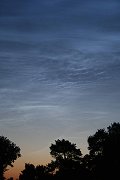
|
Alex Scholten,
Eerbeek, Netherlands
Jul. 2, 2008 |
#1,
#2 |
In the morning of July 2nd, 2008 we had a very brilliant NLC display. Lot of swirls and they covered almost half the sky. Pictures with Canon 400D 18-55mm zoomlens. Location Eerbeek (Netherlands), 1h45m - 2h15m UT
|
|
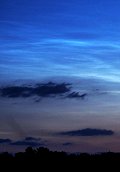
|
Guillaume Cannat,
near Montpellier, France, 43.5° N
Jun. 30, 2008 |
#1 |
On Monday 30 June at dawn, an hour before sunrise, I observed and photographed noctilucents clouds. There's nothing very exceptional apparently because the activity was intense on Europe, but I was next to Montpellier in southern France, at 43.5 degrees north latitude! I did not think we could see noctilucents clouds so far from the pole ...
|
|
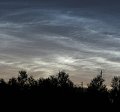
|
Oleg
Pomogaev,
Tula region, Russia.
Jun. 28, 2008 |
#1,
#2, #3,
#4 |
It's
absolutely outstanding NLC's sight in the summer midnight,
27-28 June 2008! Canon A710 IS digital camera on the tripod.
IS0 200, exposition from 6 to 10 seconds. |
|

|
Conor McDonald,
Northern Ireland
Co.Derry
Maghera
Jul. 3, 2008 |
#1,
#2, #3,
#4, more |
Started of the NLC's were spotted around 12am as a very high cirrus like formation. As it slowly darkened the extent of the display became visible. It lost its height but was very wide stretching from the nw to ne
|
|
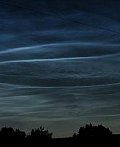
|
Andy
Mayhew,
Evesham, Worcs, England
Jul. 2, 2008 |
#1,
#2, #3 |
Olympus
SP650uz - 100ASA 1.6 sec F4.5 |
more
images (July 2): from
Martin Gembec of Jablonec nad Nisou - Kokonín, Czech Republic;
from
Martin Mc Kenna of Maghera, Co. Derry, N. Ireland; from
John C McConnell of Maghaberry, Northern Ireland; from
Tomasz Adam of Staszów, Poland; from
Ludger Koetter of Muenster /North Rhine-Westphalia / Germany
more
images (June 30): from
Marek Nikodem of Szubin, Poland; from
John Houghton of Leicester, UK; from
Danny Ratcliffe of Dolwen, Nr Colwyn Bay, North Wales, UK
more
images: (June 29): from
Grant Privett of Burley Gate, Herefordshire, UK; from
Paul Reed of Brough, E. Yorks. United Kingdom
|
|








